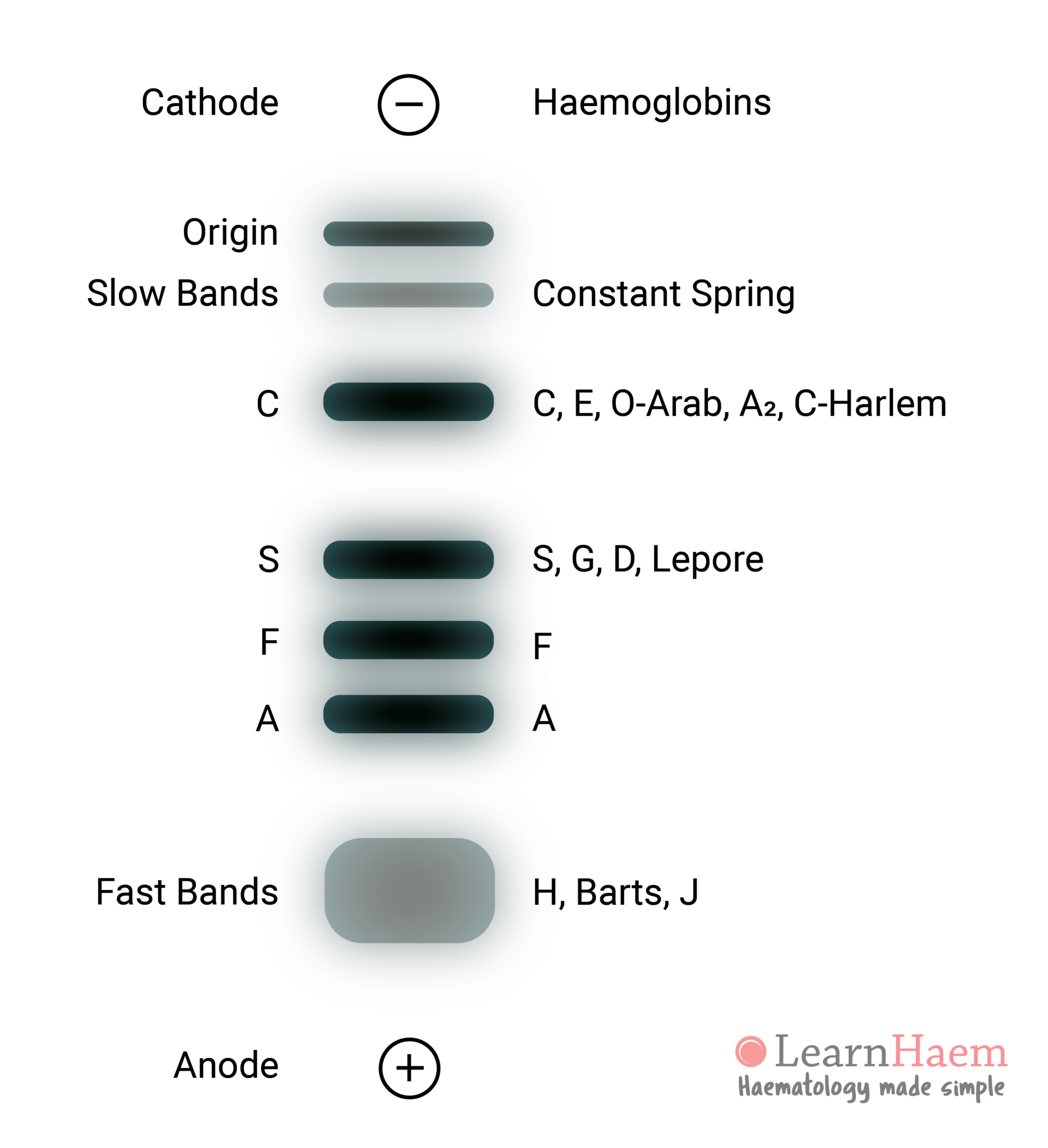The table below summarises normal and common haemoglobin variants, as well as their typical mobilities on alkaline and acid electrophoresis and HPLC. The two main haemoglobins with a positive sickle solubility test are haemoglobin S and C-Harlem. The sickle solubility test can hence be used as an adjunct when variants with the mobility / retention time of haemoglobin S is detected.
| Haemoglobin | Globin Chain | Usual % | Alkaline | Acid | HPLC | Sickle Test |
|---|---|---|---|---|---|---|
| A | α2ß2 | 96 – 98 | A | A | A | Negative |
| A2 | α2δ2 | 2 – 3.5 | C | A | A2 | Negative |
| Bart’s | α-/-α-/- | N/A | Fast | F | P1 | Negative |
| C | ßC | 40 – 45 | C | C | C | Negative |
| C-Harlem | ßC-Harlem | 40 – 45 | C | S | C | Positive |
| Constant Spring | αCS | 2 – 3 | Slow | A | C | Negative |
| D | ßD | 40 – 45 | S | A | D | Negative |
| E | ßE | 30 – 35 | C | A | A2 | Negative |
| F | α2Γ2 | < 1 | F | F | F | Negative |
| G | αG-Phil | 35 – 45 | S | A | D | Negative |
| H | α+/-α-/- | N/A | Fast | A | P1 | Negative |
| Lepore | δß fusion | 7 – 15 | S | A | A2 | Negative |
| O-Arab | ßO-Arab | 40 – 45 | C | S | C | Negative |
| Q-Thailand | αQ-Thailand | 25 – 35 | S | A-S | S | Negative |
| S | ßS | 40 – 45 | S | S | S | Positive |


This is such a great summary!
Easy to understand content.